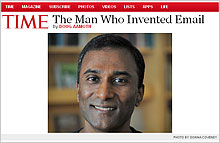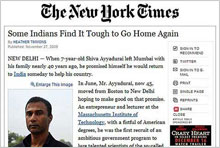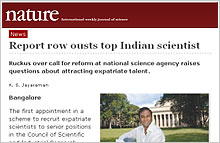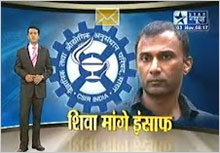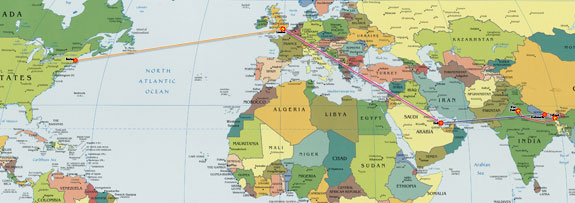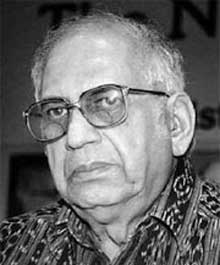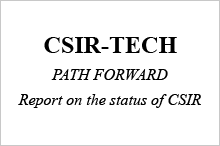Dr. V.A. Shiva Ayyadurai: The Story of a Modern Day Revolutionary
Dr. V.A. Shiva Ayyadurai, born in Bombay, India, grew up in the small village of Muhavur in the state of Tamil Nadu in India, hearing the stories of heroes of the Ramayana, where good vanquishes evil, from his grandmother who was a Siddhar and farmer. When he left India, his goal was to one day return and free his people, because as a young child, he saw the oppressive nature of feudalism, which permeated Indian society, particularly the caste system. In 1978, eight years after coming to America, V.A. Shiva invented email as a 14-year-old teenager growing up in Newark, New Jersey. He went on to receive four degrees from MIT and became a world renowned systems scientist and technologist. He went on to invent other large-scale systems across media and medicine including EchoMail and CytoSolve. Also, as a committed and innovative educator, he developed Systems Visualization, a pioneering new course at MIT as well as Systems Health, a revolutionary educational platform for medical doctors providing them a bridge to understand Eastern and Western systems of medicine.
In 2009, while in India on a Fulbright fellowship, he was appointed as the first Outstanding Scientist Technologist of Indian Origin (STIO) at the Additional Secretary level of the Indian Government, the highest Scientist Level H posting possible, by Prime Minister Manmohan Singh of India with the directive to unleash innovation across the nearly 40 labs of the Council for Indian Science and Research (CSIR). In October of 2009, based on his observations, Dr. V.A. Shiva released a honest and detailed report whose sincere aim was to promote transparency and dialog to address the significant and fundamental issues which he identified as barriers to Indian innovation. Within hours of releasing this report, his email and communication with the nearly 4,500 scientists across CSIR, many who had come to see him as a hero, was terminated. He was fired, evicted from his house, and threatened with arrest, forcing him to leave India, and derailing his noble mission to serve his motherland.
Why CSIR Had Been Created and What it Became
In 1947, following the British transfer of power to the new feudal elite of India, the new leadership of India proposed a massive allocation of resources towards the advancement of translational research. With this goal in mind, CSIR had been created, with the noble aim of innovating tangible technologies and inventions that would directly serve the Indian masses. By early 2000, CSIR had grown to 37 labs, with nearly 4,500 employees, but had devolved into an organization that published many worthless papers and thousands of questionable patents. In his interviews with senior members of CSIR, Dr. V.A. Shiva discovered, at best, perhaps 50 of the nearly 2,500 patents had any real value. In short, CSIR had become a self-serving organization, far from the goal set forth by Prime Minister Jawaharlal Nehru, the first prime minister of India and the first President of CSIR. CSIR is the only organization in which the Prime Minister of India also serves as its President.
The STIO/H Program
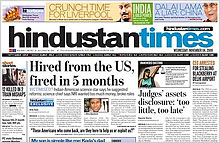
New York Times article on V.A. Shiva by Heather Timmons: Some Indians Find It Tough to Go Home Again.
In 2008, following public outcry that CSIR was not doing anything near its original goal, the government opened opened 2 positions to attract “Outstanding Scientists” of Indian descent to come back to India. They created the STIO Level H with this goal in mind. The projected aim to the public was that this move would bring talent and fresh blood to CSIR, to support innovation in India.
It was within this context that, in June of 2009, when Dr. V.A. Shiva was wrapping up his research under his Fulbright scholarship through M.I.T. that he met scientists at the CSIR Lab for Integrative Biology. One of the scientists he met was Mitali Mukherjee, who was impressed with his credentials, both as an inventor-scientist and entrepreneur who had started six companies in the United States. She informed the Director General of CSIR (who reported directly to the Prime Minister) that she may have found an individual suited for STIO (H). The only problem was that Shiva was set to return to the United States in a matter of days. Within 24 hours, Mr. Brahmachari, the then DG of CSIR, began a hard core campaign to recruit Dr. V.A. Shiva with the hopes of having him become the leader and CEO of a new entity Brahmachari called “CSIR-Tech”, which would unleash innovation across the CSIR labs.

Article on V.A. Shiva in The Week: NRI scientist fires a salvo of accusations. The CSIR fires him in return.
To show his commitment and to stop Dr. V.A. Shiva from leaving to the United States, Brahmachari provided a hand-written offer letter and promised him an attractive package of salary and benefits appropriate for Scientist Level H, Additional Secretary position [1][2]. For Dr. V.A. Shiva, those were relatively nominal issues. For him, the opportunity to give back to his motherland, and affect change and serve the masses of Indians, by using his skill as a scientist and technologist was a dream come true. Dr. V.A. Shiva was made a commitment by Brahamachari that he would be allowed to move quickly and execute his vision, and would be provided the necessary funds to fund innovations he discovered from the talent of scientists across the CSIR system.
Brahmachari agreed to allocate a budget of $10,000,000 so that Dr. V.A. Shiva could fund the right projects to unleash innovation across CSIR labs. Dr. V.A. Shivaalso agreed to the challenge of creating 6 new companies for CSIR innovations within the next 12 months. Embracing the challenge, Dr. V.A. Shiva and the CSIR team signed an official agreement and Dr. V.A. Shiva stopped his return back to the United States [3][4]. His first order of business was to create a board and then to reach out to each and every one of the 37 labs scattered around India [5][6][7] to educate the workforce on the changes that were to take effect [8][9][10][11][12][13][14]. It was clear to those involved that, though this would be a drastic redirection, it was due time for years of inventions to hit the market. Dr. V.A. Shiva received overwhelmingly positive feedback from his peers. He directly met with nearly 1,500 scientists, visited 10 labs and identified at least 12 innovations which could generate billions of dollars of market value.
The Reality of CSIR
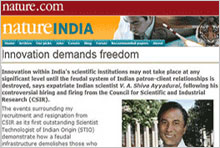
Dr. V.A. Shiva’s commentary on the CSIR issue in Nature India magazine, which they were forced to remove under pressure from the Indian government.
Shortly after releasing an Interim Report [15][16], it became evident to Dr. V.A. Shiva that things are not exactly as they seemed. His travels from lab to lab left the same unfortunate impression. The labs were disorganized and those in charge displayed little interest in the advancement of excellence amongst their staff. Individuals with any position of power within CSIR were not truly on board if it meant that they would have to relinquish some of their control. Things took an eerie turn when, one evening in July, the building Dr. V.A. Shiva’s office was in, sustained a massive fire, coincidentally during when Brahmachari himself, was being audited for embezzlement of nearly $40 million. Who died in the fire? Three people. One of them was the bookkeeper.
In October of 2009, Dr. V.A. Shiva had come to the conclusion that he was merely being used for PR purposes by Brahmachari and the Indian CSIR leadership had brought him in just to appease the public that they were in fact doing something; however, in reality, they did not want Dr. V.A. Shiva to do anything. At one point, a senior official told Dr. V.A. Shiva, “…why don’t you just be quiet? Don’t rock the boat. One day you will become Minister of Science and Technology.”
On October 19, 2009, Dr. V.A. Shiva completed an all-encompassing draft report on the status of CSIR: CSIR-Tech Path Forward. He sent the draft to all researchers and CSIR staff, welcoming comments and response from his peers and co-workers. Within hours of this report’s release, Dr. V.A. Shiva’s email was shut down and he was ordered to cease communication with any individual affiliated with CSIR and/or CSIR laboratories. To make matters worse, he and his family were evicted from their home.
Press and Media Spread the Story, While Under Pressure from the Indian Government
The editorial board of Hindustan Times asked Dr. V.A. Shiva for an exclusive story. He agreed to grant exclusivity on the condition that they report the truth. Meanwhile, the reporter from Hindustan Times, Anika Gupta told Dr. V.A. Shiva that she was being threatened and under incredible pressure from the CSIR leadership to not write the story. As a result of this pressure, she was forced to write a “more balanced story” and blunt the full nature of corruption of the CSIR leadership.
After the Hindustan Times story, Heather Timmons from the New York Times also did an investigative story on the events at CSIR. She interviewed both Dr. V.A. Shiva and Brahmachari. Ms. Timmons was also threatened by Brahmachari that she would lose her job if she continued with her story. Following the Hindustan Times and New York Times articles, STAR News asked for a prime-time interview with Dr. V.A. Shiva.
Prior to the interview, the anchorman for STAR News notified him that he had just received word from CSIR that if Dr. V.A. Shiva did the interview, he would be arrested. The Indian Government has been known to trump up charges to silence and nail its critics. Dr. V.A. Shiva had a decision to make. He contacted the US embassy, who asked him to immediately come to the embassy for protection and not do the interview. However, Dr. V.A. Shiva decided to do the interview in spite of the threat to his safety for one singular reason: to use his position to speak out on behalf of the Indian masses who had no voice. The interview finally ran for nearly 8 minutes across India at prime-time.
Dr. V.A. Shiva received word from supporters and confidants within the CSIR system that the Indian Government was moving to arrest him. He was left with no choice but to leave India. He took a 32 hour train to the India-Nepal border. He then crossed the border from India into Nepal on foot, after which he took a propeller plane to Kathmandu, Nepal’s capital. From Kathmandu, he took another plane to Qatar and then travelled to London and finally reached Boston.
Nature Magazine Publishes Dr. V.A. Shiva’s Commentary and then Caves In Under Threat from the Indian Government
Following his epic voyage home, NATURE India asked for Dr. V.A. Shiva’s commentary. He wrote an article called Innovation Demands Freedom. The Nature editors loved the article and published it without any major edits. Shortly, after it’s publication, Nature itself was threatened with a lawsuit. The editors, based on the intense pressure and threats put on them by the Indian government caved in and removed the article. They contacted Dr. V.A. Shiva and shared the threats they had received. However, by then the article was up on various Indian blogs on the Internet. The Indian Government took things one step further and paid bloggers to create fake blog sites, and worked hard in an attempt to destroy Dr. V.A. Shiva’s reputation.
The Path Forward
In May of 2012, nearly three years after, Dr. V.A. Shiva’s appointment and subsequent dismissal at CSIR, a group of lawyers performed an RTI (Right to Information) and recovered key documents which validated Dr. V.A. Shiva’s side of the story. Though three years went by, CSIR looks as though not much has changed. CSIR is up to its same old tricks but the Indian people are not so easily pacified now, for Dr. V.A. Shiva was a pioneer in the now growing movement corruption. He spoke out against corruption, put his life on the line, when it was not so fashionable to be an anti-corruption crusader.
Dr. V.A. Shiva’s slogan Innovation Demands Freedom is really a revolutionary call for action. His bold statement says it all: there can be no innovation without freedom.
